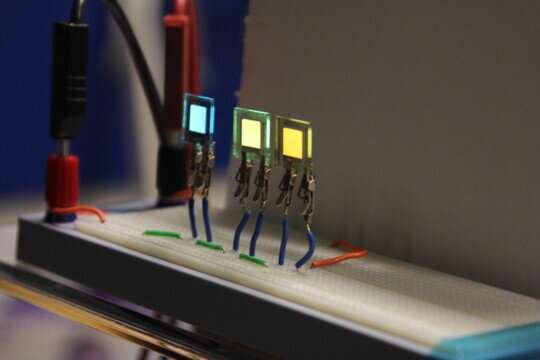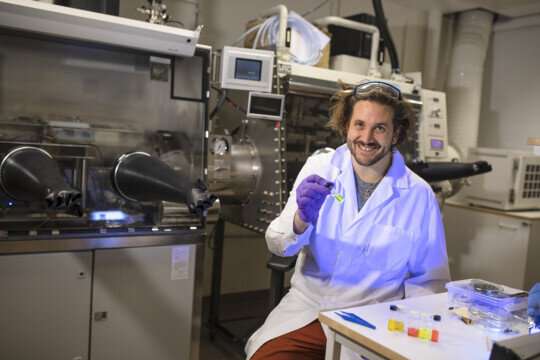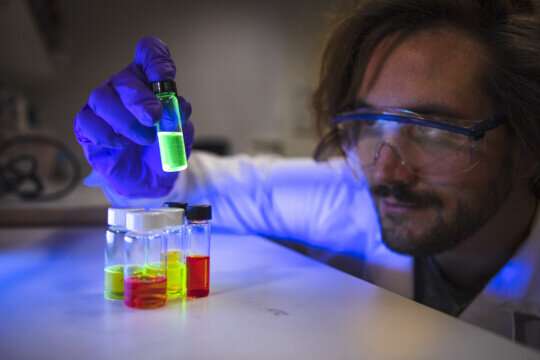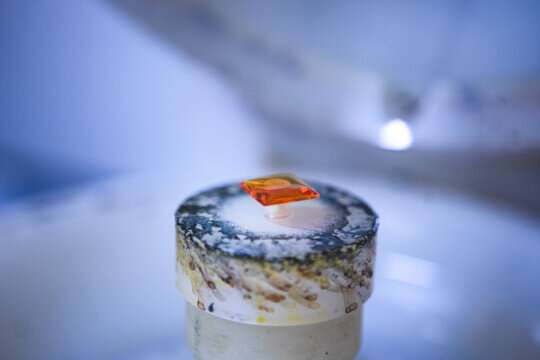Bright and efficient light without rare metals

Modern smartphone displays, as well as many other efficient light sources, contain costly and environmentally problematic rare metals. For a sustainable future, engineers must turn to sustainable materials. Researchers at Umeå and Kyushu University show that such materials are practical alternatives for efficient light emitting electrochemical cells. The results are published in Nature Communications.
Organic light sources are entering the market with many new light emitting applications spanning from medical diagnostics to electronic textiles. In this aspect, the light emitting electrochemical cell (LEC) is a rising star. It is a super thin and flexible light source, which allows for cheap and upscaleable "newspaper-like" manufacturing.
Unfortunately, today's most efficient LECs, like many other light sources, contain rare metals such as iridium. This makes them expensive and environmentally problematic. To fabricate purely organic light sources that are efficient in transforming electricity into light that are also cheap and recyclable is a challenge.
The newly developed group of completely organic light emitting materials match the efficiency of the rare-metal based ones. These materials have already shown promising results when incorporated in complex high-end devices. However, when included in the less complicated and hence cheaper LECs, their performance has not been sufficient until now.
-

Petter Lundberg. Credit: Mattias Pettersson -

Credit: Mattias Pettersson -

Credit: Mattias Pettersson
A recent study carried out by physicists at Umeå University, in collaboration with Kyushu University, demonstrates that bright and efficient light is achievable from LEC based on such organic light emitting materials.
By understanding and making use of the distinguishing features of LECs such as the electrochemical doping, the researchers have shown that these environmentally greener materials are a practical alternative in LECs.
"The LEC may have a simple device design, but the dynamics that occur in that thin film that enable light emission are involved. It is a sophisticated interaction between organic semiconductors and mobile ions, which have to be balanced in order to attain bright and efficient light. The efficiency of light-emitting materials depends highly on their nanoscopic surrounding, and it is with that in mind we were able to boost their performance," says Petter Lundberg, lead author and doctoral student at the Department of Physics, Umeå University.
More information: Petter Lundberg et al. Thermally activated delayed fluorescence with 7% external quantum efficiency from a light-emitting electrochemical cell, Nature Communications (2019). DOI: 10.1038/s41467-019-13289-w
Journal information: Nature Communications
Provided by Umea University





















